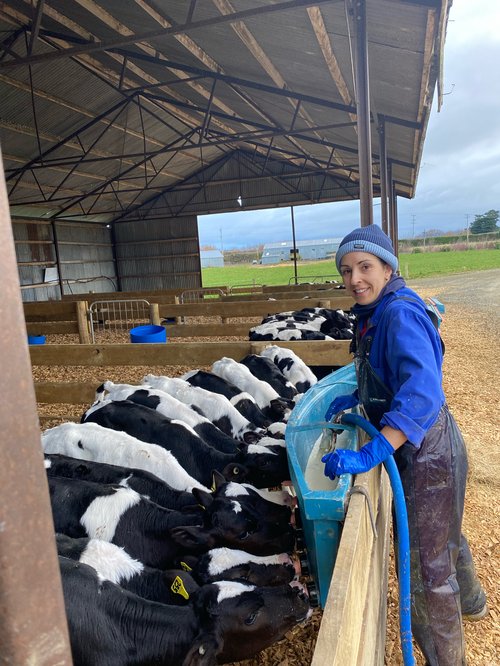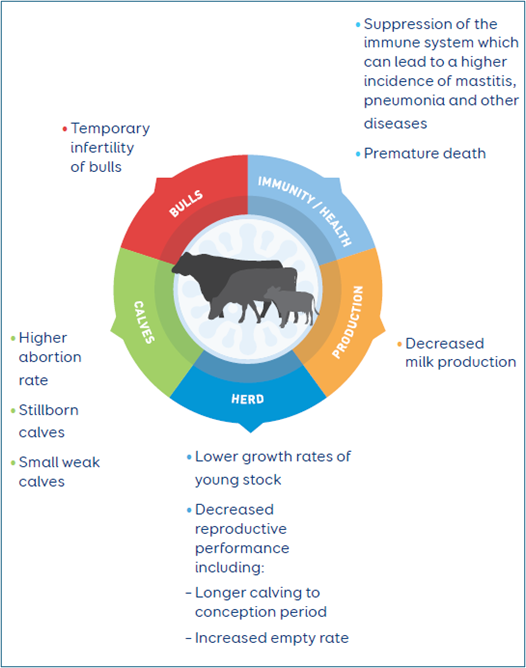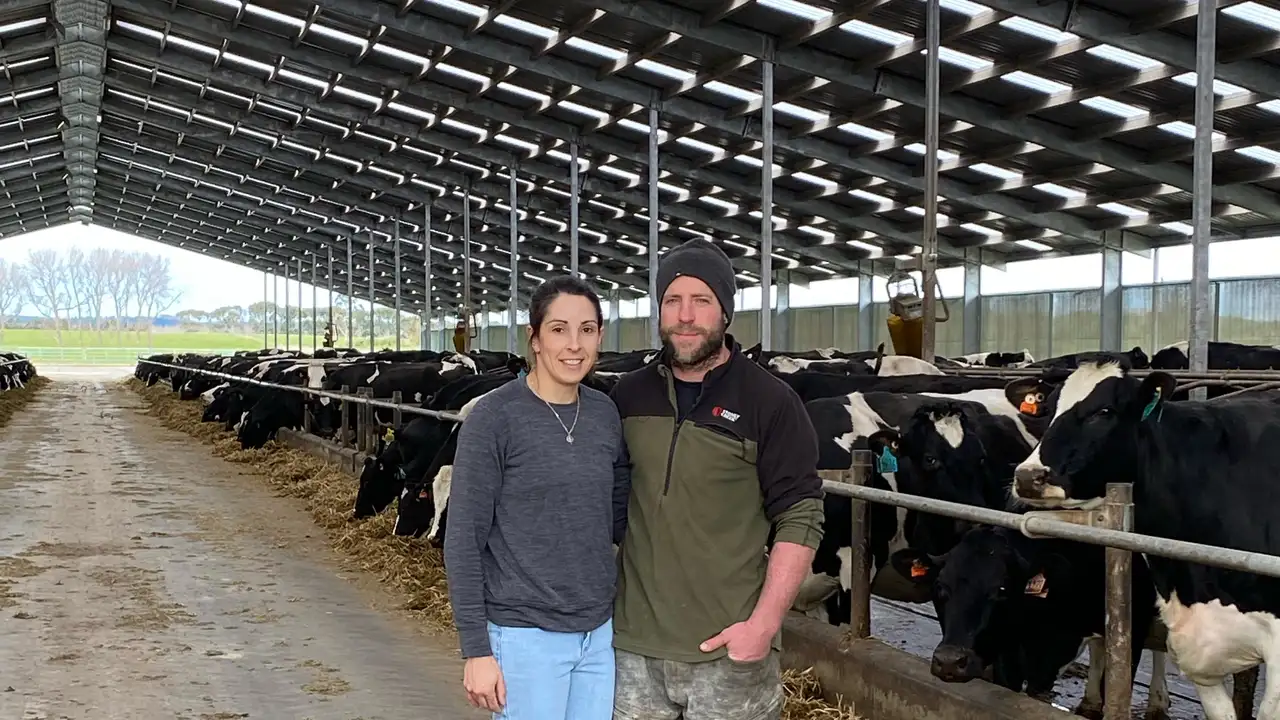A single persistently infected (PI) BVD animal that came into contact with cows at mating time forced Southland farmer Mitch Johnston to cull a total of 75 dairy replacements and beef calves this year.
It had been a nightmare winter of involuntary culls due to dozens of calves being born PI, Mitch said.
Mitch claimed he had “put too much of my trust” in a seemingly reputable breeder and stock agent.
Beside the stock culled to date, costing tens-of-thousands in lost genetics and related opportunities, the expense is ongoing: Thousands have been spent this year on bovine viral diarrhoea (BVD) testing, and future production and reproduction costs, although significant, are perhaps incalculable.
Mitch is tightly crossing his fingers that no more PI calves are born this spring.
He and wife Kate own a 1000-cow herd which is completely A2/A2 and milks all year round, with the aim to have 30-40% of the herd autumn calving.
Currently the herd returns about 780,000kg of milksolids per annum.
The problem began in the autumn of 2023, when Mitch and Kate were looking to purchase stock to enable them to cull a higher percentage of the bottom end of their herd.
“The ability to buy cows that fit our system is very difficult, with the requirement for all stock on farm to be A2/A2 to meet supply agreements with our milk processor,” Mitch said.
“Through two dispersal sales, the opportunity presented itself to buy some genuine pedigree Holstein Friesians, animals we thought would fit our high input system.”
The marketing and sales material associated with the auction stated all animals were tested and cleared of BVD, Mitch said.
“Our BVD policy is to bulk milk test three times a year, twice in spring and once in autumn. The herd itself usually rocks a moderate exposure level, but the first (spring ‘23) test came back and it had gone through the roof.”
Although the test revealed a high exposure level, the PI animal did not show up on the bulk milk test, so to cover his tracks Mitch elected to blood test the cows he’d recently purchased.
By that time, the PI animal had been on-farm for up to five months.
Following advice from their vet the decision was made to test both 2023 and 2024 calves due to their dams being exposed to the PI animal during gestation.
When results came back for the 2023 spring calves Mitch was hugely relieved: “100% were clear. We thought we’d dodged a bullet.”
But they hadn’t.

In early winter 2024, at two-months-old, the first batch of autumn-born calves were tested.
Of the 48 tested, 25 came back as high-positives and one was positive (i.e. as persistently infected BVD animals).
“Because it was such a high percentage, we held them for another month and re-tested with a blood test… we didn’t want to waste the animals if the dry punch test wasn’t accurate,” Mitch said.
“Unfortunately, it was 100% accurate. Every animal that came back positive on the punch was positive on the blood.”
Everything that’s hit the ground since that time has been batch tested. In the second batch, 17 calves were tested, and 12 of them were PI-positive. The third batch consisted of 97 calves, of which four were positive. The last two batches have shown negative results.
On his farm this spring, Mitch will batch test all newborn calves at 4-10 days old.
“The cost of the test is nothing at four days old, especially if you’re unwittingly exposing a PI to other calves or the herd.
“Using those (LIC) dry punches to test has been great for us; we can test ourselves rather than get the vet in. We can batch test – as soon as we get 20-30 on the ground we can get them away.”
Mitch is optimistic he’s through the worst of his nightmare.
“Our advice was that the autumn-born ones were most likely to give us the biggest headache because the PI animal turned up in middle of our autumn mating, and virus was going through the herd in early to mid-pregnancy, which is the key time for when those PI animals are going to be created.
“Hopefully the infections had already gone through the herd enough that these spring (24) ones are going to come back with a lot lower percentage.”
Mitch will also now close his farm system, going all-AB (apart from natural mate Jerseys over the yearlings/heifers), and breeding all replacements within rather than buying any stock.
He will continue with his LIC bulk milk test regime, and says any sudden spikes are a flag to take immediate action.
Mitch is seeking more information on LIC’s BVD Status Pack, which will label every animal in his herd with a lifetime BVD status.
“The speed of the infection is incredible, and that’s what we’re really amazed by. I would say most farmers wouldn’t have an appreciation for the damage a PI can cause until it happens to them.”

Why is a persistently infected animal so dangerous to herd health?
- PI animals are the main source of BVD infection within dairy herds and should be immediately culled.
- A PI animal is created when its mother is exposed to the BVD virus within the first 4 months of pregnancy. The PI animal is a born carrier of the BVD virus and will shed large amounts of virus for its entire life.
- PI animals are often slow growing and poor producing, and rarely live past five years of age. However, they can also have the potential to appear to be some of the best-looking calves or cows in the herd.
- A PI cow will always give birth to a PI calf.
What can be done to prevent BVD and PIs from destroying herd health?
- Test the herd for any BVD infection prior to mating.
- Test individual animals (including those that don’t supply the vat) for their PI-status using herd test, tissue, and/or blood samples.
- Monitor ongoing BVD exposure levels of the herd throughout the season with LIC’s Bulk Milk Monitor Pack.
- LIC’s (BVD) Status Pack helps monitor the BVD status of your herd throughout the season and helps identify persistently infected animals. The Status Pack is a cost-effective solution that both incorporates all Bulk Milk Monitor Pack tests and:
- identifies both positive and negative animals at the herd test;
- includes individual BVD testing; and,
- provides a lifetime BVD Status for tested animals which is uploaded to MINDA® (all bulk tank milk monitor pack tests are included).





